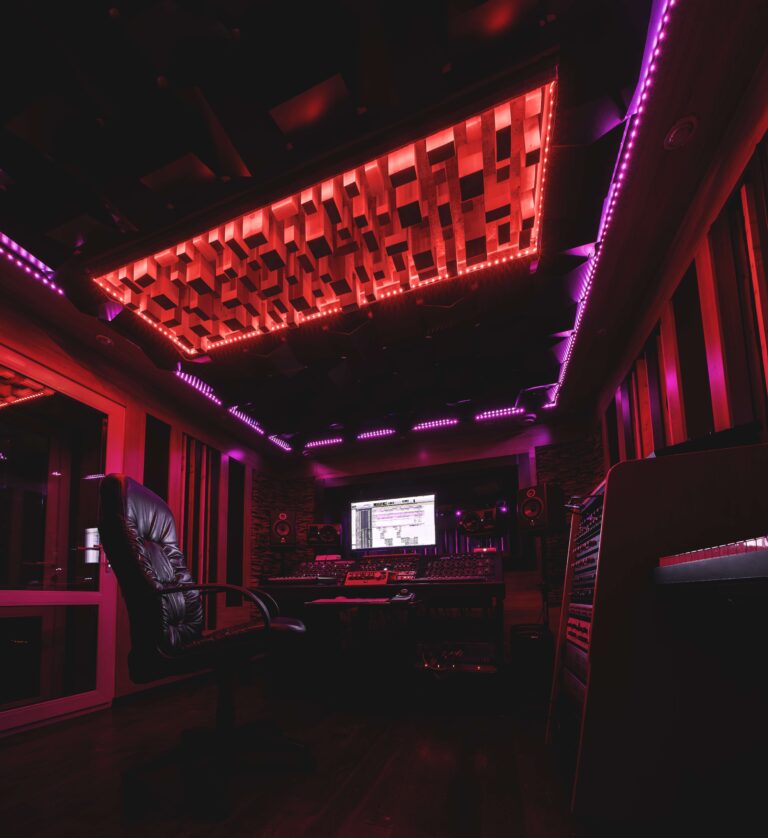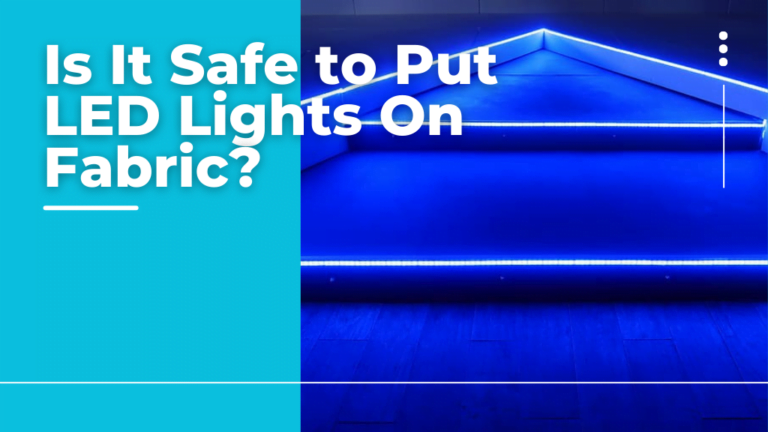How to Reset LED Strip Lights [Easy Way]

Introduction
Are your LED lights displaying different colors or any other issue?, leaving you puzzled and frustrated? Don’t worry, we’ve got you covered! In this comprehensive guide, we’ll walk you through the step-by-step process of resetting LED strip lights to fix those color discrepancies. probably Reset LED Strip Lights is what you need !

Reasons for Resetting LED Strip Lights
Wondering when and why you should reset your LED strip lights? Let’s delve into the reasons:
When to consider resetting LED strip lights
- After changes in the electrical setup: If you’ve recently made changes to the electrical setup or replaced components, resetting the LED strip lights can help ensure proper synchronization and color output.
- When experiencing inconsistent color variations: If you notice sporadic fluctuations in color output or inconsistent color transitions, resetting the LED strip lights can help recalibrate the system.
Signs that indicate LED strip lights need to be reset
- Inconsistent color output: If your LED strip lights are displaying different colors or have sections that are not matching the desired color, it’s a clear indication that a reset might be necessary.
- Flashing or flickering lights: If your LED strip lights are flickering or flashing rapidly, it could be a sign of a system malfunction that can potentially be resolved through a reset.
How resetting can resolve common LED strip light problems
- Restoring default settings: Resetting LED strip lights often restores the system to its default settings, resolving any configuration issues or software glitches that may be causing color inconsistencies.
- Clearing memory or cache: A reset can clear any stored memory or cache that might be affecting the color output, allowing the LED strip lights to start afresh.

Preparing to Reset LED Strip Lights
Before initiating the reset process, it’s crucial to take certain preparatory steps:
Safety precautions before starting the reset process
- Turn off the power supply: Ensure that the power supply is switched off and disconnected from the electrical outlet before attempting any reset procedures. This prevents the risk of electrical shock or damage to the system.
Tools needed for resetting LED strip lights
- Screwdriver: Depending on the type of LED strip lights you have, you may need a screwdriver to access the connectors or wiring.
- Multimeter: A multimeter is useful for measuring voltage and checking the electrical connections.
Checking the power source and connections before resetting
- Inspect the power supply: Before resetting, visually inspect the power supply for any physical damage or loose connections. Address any visible issues before proceeding.
- Check the wiring connections: Examine the wiring connections between the power supply, controller, and LED strip lights. Ensure that all connections are secure and properly aligned.
Methods to Reset LED Strip Lights
Resetting LED strip lights can be done through various methods:
Step-by-step guide on manual reset options
- Turn off the power supply: Turn off the power supply connected to the LED strip lights.
- Locate the reset button: Check if your LED strip lights come with a built-in reset button. Consult the manufacturer’s instructions or documentation to identify its location.
- Press and hold the reset button: Press and hold the reset button for a few seconds until you see the LED lights flash or the system indicators change.
- Release the reset button: Release the reset button and wait for the LED lights to stabilize. The reset process is now complete.
Using the remote control (if applicable)
- Turn off the power supply: Ensure that the power supply connected to the LED strip lights is turned off.
- Locate the reset button on the remote control: Check if your LED strip lights’ remote control has a reset button. Refer to the remote control’s user manual or manufacturer’s instructions to find the reset button.
- Press and hold the reset button on the remote control: Press and hold the reset button for a few seconds until the LED lights flash or the system indicators change.
- Release the reset button: Release the reset button on the remote control. Wait for the LED lights to stabilize, indicating that the reset process is complete.
Turning the lights off and on in sequence
- Turn off the power supply: Ensure that the power supply connected to the LED strip lights is turned off.
- Turn on the first LED light: Switch on the first LED light in the sequence.
- Wait for a few seconds: Wait for a few seconds before turning on the next LED light in the sequence.
- Repeat the process: Repeat the process of turning on each LED light in the sequence, waiting for a few seconds between each light.
- Turn off the power supply: Once all LED lights in the sequence are turned on, switch off the power supply.
- Wait for a few seconds: Allow the system to discharge by keeping the power supply turned off for a few seconds.
- Turn on the power supply: Turn on the power supply and check if the LED lights are now displaying the desired colors.
Checking for loose connections and re-securing them
- Turn off the power supply: Ensure that the power supply connected to the LED strip lights is turned off.
- Inspect the connections: Examine the connections between the LED strip lights, controller, and power supply. Look for any loose connections or improperly seated connectors.
- Secure the connections: If you find any loose connections, securely reattach the connectors and ensure they are properly aligned.
- Turn on the power supply: Turn on the power supply and check if the LED lights are now displaying the desired colors.
Automatic reset options available for specific LED strip light models
Some LED strip light models come with automatic reset options. Refer to the manufacturer’s instructions or documentation specific to your LED strip lights to identify if this feature is available. Follow the provided instructions to initiate the automatic reset process.

Troubleshooting Tips During Resetting
Encountering issues during the reset process? Here are some troubleshooting tips:
What to do if the reset process is not successful
- Check the power supply: Double-check that the power supply is functioning correctly and providing the required voltage for the LED strip lights. Consider testing the power supply with a multimeter.
- Inspect the wiring connections: Verify that all wiring connections are secure and properly aligned. Loose or improperly connected wires can disrupt the reset process. Recheck and resecure any loose connections.
- Consult the manufacturer or seek professional help: If the reset process is not successful or if you encounter persistent issues, reach out to the manufacturer’s customer support or consider seeking assistance from a professional electrician or technician experienced in LED lighting systems.
Additional troubleshooting steps to consider
- Update firmware or software: If your LED strip lights are controlled by a controller or software, check for any available firmware or software updates. Updating the firmware or software can address compatibility issues and improve system performance.
- Inspect the LED strip lights for physical damage: Examine the LED strip lights for any physical damage, such as broken or cracked components. Damaged components can affect the color output and may require replacement.
- Consider environmental factors: Factors such as temperature, humidity, or nearby electrical interference can affect the performance of LED strip lights. Ensure that the operating conditions are within the manufacturer’s recommended range.
When to seek professional help for persistent LED strip light issues
If you’ve exhausted all troubleshooting steps and are still experiencing persistent issues with your LED strip lights, it may be time to seek professional help. A qualified electrician or technician experienced in LED lighting systems can diagnose and resolve complex issues, ensuring the optimal performance of your LED strip lights.
Maintenance Tips for LED Strip Lights
To ensure the longevity and optimal performance of your LED strip lights, consider these maintenance tips:
Regular maintenance practices to prevent frequent resets
- Dust and debris removal: Regularly clean the LED strip lights to remove dust and debris that can hinder the color output or cause overheating. Use a soft, lint-free cloth or a gentle brush to clean the lights.
- Inspect and secure connections: Periodically inspect the wiring connections to ensure they are secure and properly aligned. Address any loose connections promptly.
- Monitor for signs of wear or damage: Regularly check for signs of wear or damage, such as frayed wires or discolored components. Replace any damaged parts to prevent further issues.
Cleaning and care tips for extending the lifespan of LED strip lights
- Avoid excessive moisture: LED strip lights are sensitive to moisture. Avoid exposing them to excessive humidity or water to prevent damage.
- Use appropriate cleaning solutions: When cleaning the LED strip lights, use mild, non-abrasive cleaning solutions. Avoid harsh chemicals that can damage the lights or affect the color output.
- Proper storage: If you need to store LED strip lights, ensure they are stored in a dry and dust-free environment. Coil the lights carefully to prevent tangling or damage.
How to avoid common mistakes that can lead to LED strip light malfunctions
- Proper installation: Follow the manufacturer’s instructions for installation to ensure correct wiring and connection. Improper installation can lead to color inconsistencies or system malfunctions.
- Avoid overloading the system: Do not exceed the maximum load capacity of the LED strip lights. Overloading the system can cause overheating or damage to the LED lights and the power supply.
- Do not bend LED strip lights excessively: LED strip lights have a maximum bending radius. Avoid bending them beyond their specified limit to prevent damage to the internal components.
Proper maintenance, troubleshooting, and resetting techniques are essential for addressing issues with LED strip lights displaying different colors. By following the steps outlined in this guide, you can troubleshoot and fix different colored LED lights, restoring the uniformity and vibrancy of your lighting setup. Remember to always prioritize safety and consult professionals when needed. So, don’t let those different colors dim your spirits – reset and illuminate your space with vibrant LED lighting!
FAQs
- How do I reset LED strip lights using a remote control?
- To reset LED strip lights with a remote control, power off the strip, disconnect the power supply, press and hold the power button on the remote while reconnecting the power supply, and wait for the lights to cycle through colors to signify the reset.
- When should I consider resetting LED strip lights?
- Reset LED strip lights if you notice diminished response to controls, lights freezing on one color, or failure to turn on or off. Conducting resets as part of regular maintenance can help troubleshoot immediate problems and maintain vibrant illumination
- What safety measures should I take before resetting LED strip lights?
- Before resetting LED strip lights, ensure to turn off the primary power source, have a well-illuminated workspace, and remove any objects that might interfere with the reset process to prevent accidents
- How can I reset Cync light strips?
- To reset Cync light strips, start with the light strip plugged in and turned off for at least 5 seconds. Then, turn the strip on for 8 seconds, followed by turning it off.

![How to Install LED Strip Lights Without Adhesive or Damaging Walls – [Complete Guide]](https://theledhub.com/wp-content/uploads/2023/07/remove-led-strip-lights-without-adhesive-or-damaging-walls-o-1-768x768.jpg)




